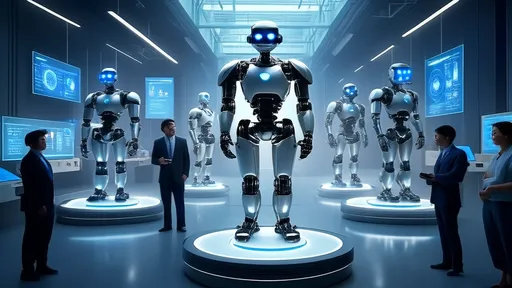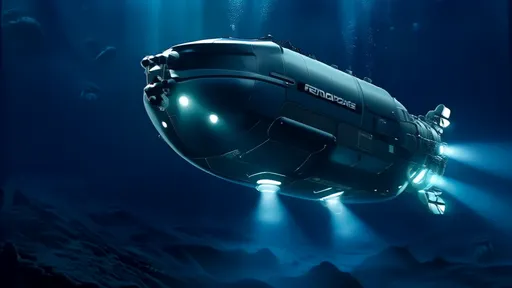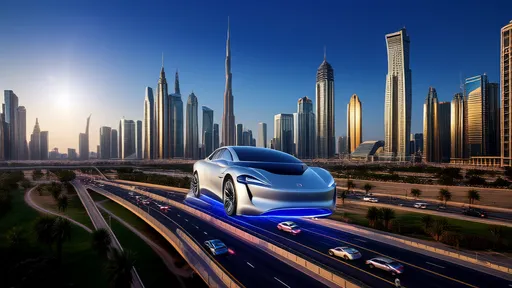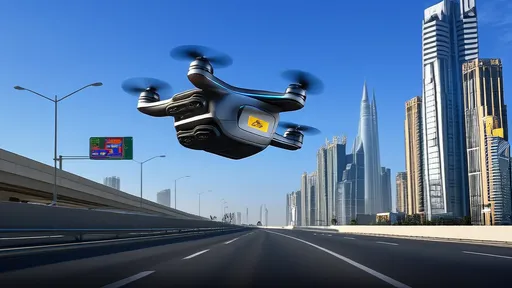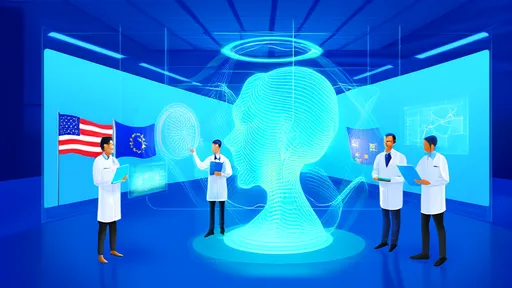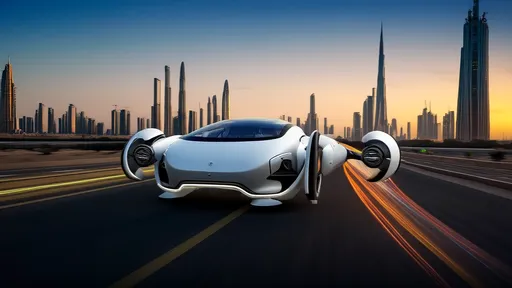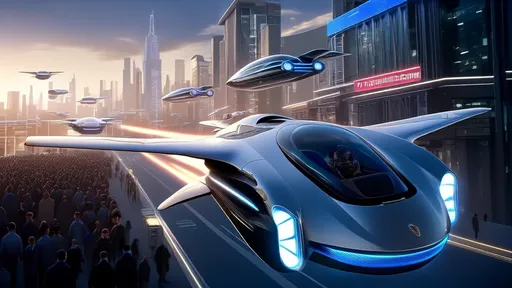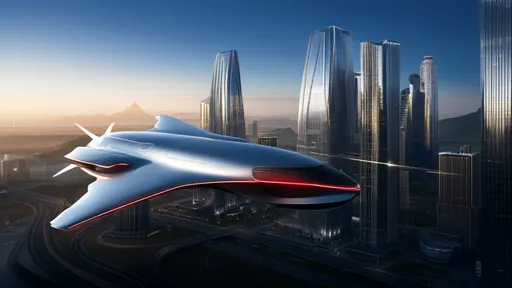In a remarkable demonstration of growing consumer confidence in aerial mobility solutions, global pre-orders for flying cars have surged past the 7,000-unit milestone. This significant threshold, reached far earlier than most industry analysts had projected, signals a fundamental shift in public perception about the viability of personal air transportation. What was once confined to science fiction novels and futuristic concept videos is rapidly transforming into a tangible consumer product category with demonstrated market demand.
The convergence of several technological breakthroughs has propelled this emerging industry from speculative venture to commercial reality. Advanced battery technologies delivering unprecedented energy density, sophisticated autonomous flight systems capable of navigating complex urban environments, and lightweight composite materials that balance durability with weight considerations have collectively addressed what were previously considered insurmountable barriers. These engineering marvels have not only made flying cars technically feasible but have begun to convince regulators and consumers alike that such vehicles can operate safely within existing transportation ecosystems.
Market analysts observing this space note that the 7,000-pre-order figure represents more than just numerical achievement—it constitutes compelling market validation for an industry that has weathered decades of skepticism. The substantial financial commitments required for these pre-orders, often involving non-refundable deposits ranging from several thousand to tens of thousands of dollars per vehicle, demonstrate genuine consumer conviction rather than casual interest. This financial stake transforms abstract market potential into concrete commercial opportunity, providing manufacturers with both the capital infusion and market confidence needed to accelerate production timelines.
Geographic distribution of these pre-orders reveals fascinating patterns about where aerial mobility is expected to gain earliest adoption. North America accounts for approximately 45% of total reservations, with particularly strong concentration in metropolitan regions plagued by chronic ground transportation congestion. Asian markets, led by China and Southeast Asian nations, represent another 35% of pre-orders, reflecting both the severe urban congestion challenges and greater cultural openness to technological transportation solutions in these regions. European markets, while showing slightly more conservative adoption rates, still contribute meaningfully to the total, with particular interest emerging from wealthier nations with robust infrastructure for luxury vehicles.
The demographic profile of early adopters provides crucial insights into the initial market positioning of flying cars. Current reservation data indicates that approximately 70% of pre-orders originate from high-net-worth individuals and corporate entities rather than general consumers. This pattern suggests that flying cars are initially establishing themselves in the premium transportation segment, comparable to business jets and luxury helicopters in their market positioning. Corporate applications appear focused on executive transport, with several companies reserving multiple units for their C-suite transportation needs.
Industry leaders have adopted varying approaches to bringing their vehicles to market, with some focusing on fully autonomous models while others retain pilot controls for regulatory compatibility. The diversity of design philosophies reflects both different assessments of regulatory timelines and varying visions for how these vehicles will ultimately integrate into transportation networks. This strategic divergence creates a natural market experiment that will determine which approach proves most commercially viable as the industry matures.
Regulatory frameworks represent perhaps the most significant remaining hurdle for widespread flying car deployment. Aviation authorities across major markets are developing certification standards specifically tailored to these hybrid vehicles that operate under both automotive and aviation regulations. The complexity of creating safety protocols for vehicles that transition between road and air travel, navigate urban environments with obstacles unlike traditional aviation contexts, and interface with existing air traffic control systems cannot be overstated. Progress, however, has been measurable, with several jurisdictions establishing special certification categories and test corridors for developmental flying cars.
Manufacturing scalability presents another critical challenge that the industry must overcome to transition from pre-production prototypes to volume manufacturing. The sophisticated engineering requirements, stringent safety standards, and specialized materials involved in flying car production necessitate manufacturing approaches that blend aerospace precision with automotive scale. Several leading manufacturers have established partnerships with traditional automotive companies to leverage their mass production expertise while maintaining the rigorous quality standards expected of aircraft manufacturers.
Infrastructure development represents a parallel challenge that must be addressed concurrently with vehicle development. Vertiports—specialized takeoff and landing facilities for vertical takeoff and landing aircraft—must be strategically located throughout urban and suburban landscapes to provide practical utility. These facilities require integration with existing transportation networks, adherence to zoning regulations, and consideration of community impact factors including noise and visual pollution. Forward-thinking municipal governments in several progressive cities have already begun designating potential vertiport locations and establishing the necessary regulatory frameworks.
The achievement of 7,000 pre-orders has generated substantial additional investment interest in the flying car sector. Venture capital firms, aerospace giants, and even several sovereign wealth funds have increased their allocations to aerial mobility companies, providing the capital necessary to advance from prototype to production. This investment surge reflects growing confidence that flying cars represent not merely niche curiosities but potentially transformative transportation solutions for congested urban environments.
Environmental considerations remain central to the development narrative of flying cars. Manufacturers universally emphasize the electric propulsion systems that power their vehicles, positioning them as sustainable alternatives to traditional combustion-engine transportation. The actual environmental impact, however, depends critically on electricity generation sources and the overall efficiency of integrated transportation systems. Lifecycle analyses comparing flying cars to ground transportation must account for the energy intensity of vertical takeoff and landing operations, which typically require substantially more power than cruising flight.
Looking forward, industry projections suggest that the current pre-order figure represents merely the earliest adoption wave in what could become a substantial transportation market. Conservative estimates project global flying car sales reaching approximately 15,000 units annually by 2030, while more optimistic forecasts suggest numbers could exceed 50,000 units if regulatory approval and infrastructure development proceed smoothly. The disparity between these projections reflects the significant uncertainties that still surround this emerging industry.
The psychological barrier of accepting personal aerial transportation appears to be diminishing more rapidly than anticipated. Social acceptance studies conducted across multiple markets indicate growing comfort with the concept of flying cars, particularly among younger demographics who have grown up with technological advancements occurring at accelerating rates. This cultural shift may prove as important as the technological advancements in determining the ultimate market penetration of flying vehicles.
As the industry progresses from pre-orders to actual deliveries over the coming years, the true test will come not in reservation numbers but in operational performance. Reliability, safety records, operational costs, and practical utility in daily transportation will determine whether flying cars become a meaningful transportation category or remain luxury novelties. The 7,000 pre-orders represent a remarkable vote of confidence, but the journey toward mainstream adoption remains filled with technical, regulatory, and market challenges.
The flying car industry stands at a pivotal moment—simultaneously celebrating a significant market validation milestone while recognizing the substantial work remaining before these vehicles become commonplace. The transition from concept to consumer product represents one of the most ambitious engineering and regulatory undertakings in modern transportation history. How successfully the industry navigates the coming challenges will determine whether we look back at the 7,000-pre-order milestone as the beginning of a transportation revolution or merely an interesting footnote in the history of technological ambition.
The once-fantastical vision of humanoid robots, long confined to the pages of science fiction and the silver screen, is steadily materializing into a tangible engineering reality. This evolution is not the result of a single, monumental breakthrough but rather a profound and intricate symphony of advancements across a multitude of scientific and engineering disciplines. The quest to create machines that not only look but also move, perceive, and interact with the fluidity and adaptability of humans represents one of the most ambitious technological endeavors of our time. It is a grand convergence, where progress in artificial intelligence, materials science, mechanical engineering, and cognitive science coalesces to breathe life into metal and silicon, pushing the boundaries of biomimicry to unprecedented heights.
The recent inclusion of humanoid robots in the 2025 Top Ten Global Engineering Achievements marks a watershed moment in technological history. This recognition transcends mere academic acknowledgment; it represents a collective global validation of decades of research, development, and iterative innovation in robotics. For years, humanoid robots existed primarily in the realms of science fiction and laboratory prototypes, often viewed as fascinating but distant curiosities. Their elevation to a top global engineering feat signals a profound shift—a transition from conceptual marvels to tangible agents of change poised to reshape our societal and industrial landscapes.
In a landmark recognition of human engineering prowess, China's full-ocean-depth manned submersible has been selected among the 2025 Top Ten Global Engineering Achievements, standing shoulder-to-shoulder with revolutionary projects like quantum computing infrastructure and Mars colonization prototypes. This prestigious listing, announced by the International Engineering Consortium earlier this morning, represents more than just technological acknowledgment—it signifies humanity's renewed commitment to conquering Earth's final frontier.
In the heart of Dubai's morning rush hour, the familiar gridlock of Sheikh Zayed Road stretches for kilometers below, but above the shimmering asphalt, a new dimension of transportation is quietly rewriting the rules of urban mobility. As first reported by The Times of India, the city's ambitious flying car initiative has transitioned from futuristic concept to operational reality, with commuters now gliding between skyscrapers in electric vertical take-off and landing vehicles. This isn't a scene from a science fiction film but the new daily reality for a growing number of Dubai residents who have traded their terrestrial commutes for the freedom of three-dimensional travel.
The desert skies of the United Arab Emirates, long dominated by the sleek silhouettes of commercial airliners and private jets, are poised to welcome a new kind of vessel. In a landmark decision that signals a significant leap from science fiction to tangible reality, a specific model of flying car has been granted a special certificate of flight from the UAE's civil aviation authority. This is not merely a provisional test permit for a closed course; it is a crucial regulatory nod that brings the vision of urban air mobility one giant step closer to the daily lives of the region's residents.
In a move signaling a new era of technological collaboration, Southeast Asian nations and the United States are forging a groundbreaking partnership in artificial intelligence development. This strategic alliance emerges at a critical juncture when global AI governance remains fragmented and the technology's potential to reshape economies and societies becomes increasingly apparent. The collaboration represents more than just technical cooperation—it embodies a shared vision for responsible innovation that respects cultural diversity while addressing common challenges.
The Euclid Space Telescope, humanity's newest and most ambitious eye on the cosmos, has begun its monumental mission to pierce the profound darkness that envelops our universe. Launched into the silence beyond our atmosphere, its purpose is not merely to capture stunning celestial portraits but to map the invisible architecture of reality itself. For decades, astronomers have known that the cosmos we see—the glittering tapestry of stars, galaxies, and nebulae—comprises a mere five percent of the total content of the universe. The remaining ninety-five percent is a profound mystery, a dual enigma composed of dark matter and dark energy. These are the phantoms of physics, entities that do not emit, absorb, or reflect light, yet whose gravitational influence dictates the fate of everything we hold visible. Euclid is our most sophisticated attempt to date to bring these shadows into the light, to understand the hidden forces that have shaped the universe's past and will determine its ultimate destiny.
Beijing's National Stadium, once the iconic centerpiece of the 2008 Summer Olympics, echoed with a different kind of applause this week. The thunderous cheers were not for human athletes pushing the limits of physical endurance, but for their mechanical counterparts—humanoid robots competing in the inaugural World Humanoid Robot Sports Games. The air, thick with the whirring of servos and the collective anticipation of engineers and spectators, marked a pivotal moment in the history of robotics and international sport.
The landscape of oncology treatment is undergoing a profound transformation, driven by the emergence of third-generation antibody-drug conjugates (ADCs). These sophisticated therapeutic agents represent a significant leap forward in the quest for precision medicine, offering new hope for patients battling various forms of cancer. Unlike conventional chemotherapy that attacks both healthy and cancerous cells indiscriminately, these advanced biologics deliver potent cytotoxic agents directly to tumor cells, minimizing damage to healthy tissues and reducing debilitating side effects.
In the relentless battle against cancer, a revolutionary class of therapeutics has emerged, earning the evocative moniker of "precision missiles" for their ability to deliver potent cytotoxic agents directly to malignant cells while sparing healthy tissue. These are Antibody-Drug Conjugates, or ADCs, and they represent a sophisticated fusion of biologic targeting and potent chemotherapy, a paradigm shift in oncology that is redefining treatment expectations for a growing number of cancers.
The desert skies above Dubai witnessed a historic moment last week as the sleek silhouette of a flying car cut through the cerulean blue, marking what many industry experts are calling the dawn of a new era in personal transportation. The demonstration, orchestrated by the pioneering aviation firm AeroMobil Emirates, was not merely a test flight; it was a powerful statement of intent, a tangible promise of a future once confined to the pages of science fiction.
In a remarkable demonstration of growing consumer confidence in aerial mobility solutions, global pre-orders for flying cars have surged past the 7,000-unit milestone. This significant threshold, reached far earlier than most industry analysts had projected, signals a fundamental shift in public perception about the viability of personal air transportation. What was once confined to science fiction novels and futuristic concept videos is rapidly transforming into a tangible consumer product category with demonstrated market demand.
In the shimmering heat of the Arabian Gulf, a new silhouette is beginning to pierce the horizon. It is not the familiar form of a commercial airliner nor the sleek profile of a private jet, but something altogether more futuristic—a flying car. This vision, once confined to the realms of science fiction, is fast becoming a tangible reality, and it is Chinese innovation that is poised to turn the skies above Dubai, Abu Dhabi, and Riyadh into a dazzling new theater of urban mobility.
The relentless march of artificial intelligence demands computational power on a scale previously unimaginable. At the heart of this revolution lies the Graphics Processing Unit, or GPU, which has evolved from a specialized graphics rendering component into the primary engine for AI workloads. The latest generation of GPU architectures represents a paradigm shift, not merely an incremental improvement. These new designs are fundamentally re-engineering the silicon to tackle the unique and colossal demands of modern AI, with a core focus on achieving unprecedented levels of computational density and efficiency through hyper-scale integration.
The ASEAN-US AI Cooperation Forum concluded its third annual session this week with a renewed commitment to bridging the digital divide through focused capacity building and infrastructure development. Held against the backdrop of rapid technological advancement, the forum brought together policymakers, industry leaders, and academics to chart a collaborative path forward, recognizing that the benefits of artificial intelligence must be distributed equitably to ensure regional stability and prosperity.

